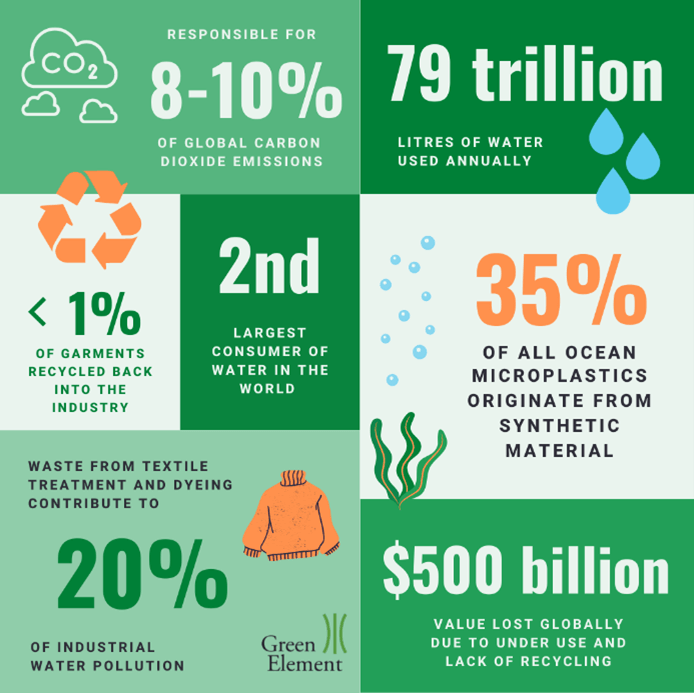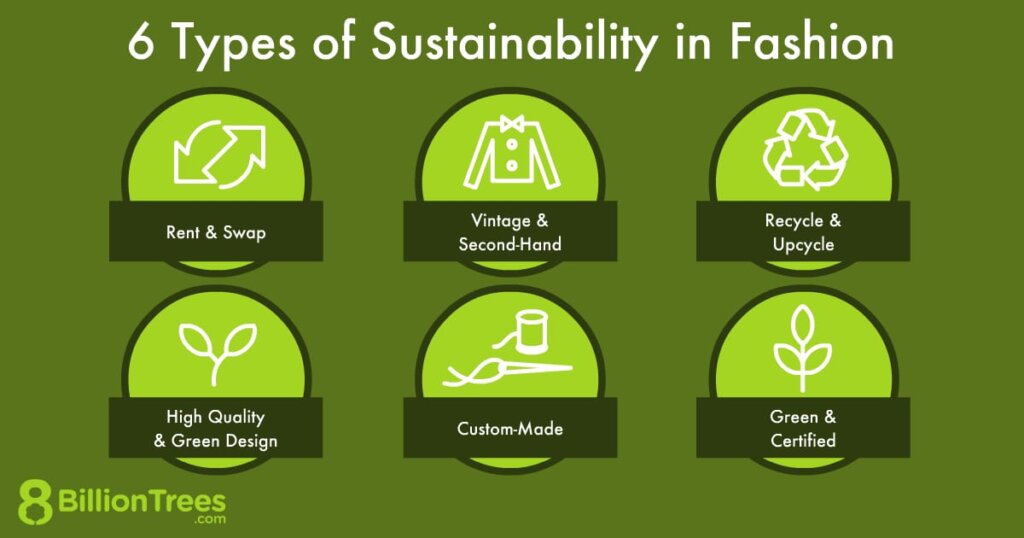
WHY SUSTAINABLE FASHION IS THE NEED OF THE HOUR?
- April 22, 2023
- Posted by: inifd
- Category: Fashion ,
Since the 2000s, fashion production has doubled and it will likely triple by 2050. In the previous 50 years, the production of polyester, which is used in a lot of fast fashion that is inexpensive and athletic clothing, has multiplied nine times. Clothing has become inexpensive. It is frequently thrown away after only a few uses. Online shopping has made impulsive purchases.
What is Fast Fashion and its effects on environment?
Fast fashion has a shockingly negative impact on the environment and society. The need for a transition to sustainable fashion is obvious. The fact that the effects of the fashion industry on pollution, water consumption, carbon emissions, human rights, and gender inequality are growing.

Fashion production makes up 10% of humanity’s carbon emissions. It also dries up water sources, and pollutes rivers and streams. What’s more, 85% of all textiles go to the dump each year (UNECE, 2018). Washing some types of clothes sends a significant number of microplastics into the ocean.
Consumer awareness of the negative effects of fast fashion growing. It is critical for the fashion industry to update its expertise in a sustainable fashion. Sustainability in fashion is about more than just textiles or goods. It addresses the entire product lifespan process. Including how apparel is manufactured, consumed, and disposed of in landfills.
What is sustainable fashion ?
Sustainable fashion is an all-inclusive term that refers to products, processes, activities, and stakeholders (policymakers, brands, consumers) aiming to achieve a carbon-neutral fashion sector based on equality, social justice, animal welfare, and ecological integrity.
CONFUSED ABOUT HOW TO GO SUSTAINABLE? HERE WE GO!
1) GO GREEN AND ECO-FRIENDLY: Buy from green-fashion companies advocating the replacement of plastics with eco-friendly, biodegradable, and natural fibers such as organic cotton, hemp, mushroom leather, and kelp leather. And always check if the brand is transparent enough to let you know what goes behind building their products.
2) CONSCIOUS BUYING AND LESS BUYING: Even the most environmentally friendly garment requires resources for creation and transportation to your home, resulting in some environmental impact. In our day and age, finding something that is completely authentic can be a lot harder than you might want to think. It’s an unfortunate reaction to simply having too many options out there to choose from. It creates comfort to the point where we can turn our brains off and simply focus on what works best for us.
So, buy less and buy what you actually find essential to spend money and resources for.
3) KNOW ETHICAL FASHION: Ethical fashion is a type of sustainable fashion. A moral attitude that a company adopts to ensure that no humans or animals are harmed as a result of their manufacturing practices. Animal cruelty is also majorly done to produce some kind of expensive textiles.
4) UP-CYCLED AND RECYCLED FASHION: Before throwing out your clothes, THINK TWICE. Don't put your garments in regular trash cans! The majority of them are made of synthetic, non-biodegradable fiber and will simply build up in landfills.

• REINVENT: Sometimes a bit of imagination and creativity can turn torn or unused clothing into something very aesthetic to wear. It also gives you space to explore your own sense of artistry.
• DONATE OR SWAP: You can always donate your clothes which you find outdated to someone who has a different meaning for clothing as a need.
In older times, our grannies used to possess one or two pieces of garment and they were proud to swap their clothes with their friends and cousins. This is one way to buy less and use more. Reselling is always quite popular nowadays.
• QUALITY CLOTHES: Always try to buy good quality clothes which have a good shelf life. It's better to spend on one than on five, which the price has to pay by nature.
• RENT CLOTHES: The clothing rental industry is also expanding. This is an excellent alternative, especially for things that you will not use for an extended period of time or frequently (baby or pregnant clothes, party dresses, etc.). Some businesses also charge a monthly subscription, allowing customers to regularly update their outfits.
The environmental and social cost of the fashion industry forces us to rethink fast fashion and stresses the need for more sustainable business models and practices. Resources hereunder provide additional information on the environmental impacts of fashion, and potential pathways for change WELL, where there is will there is a way! If one starts training their mind in the direction of the sustainable idea, we will surely achieve the value to harm nature as little as possible. Adapting to the new sustainable model can be challenging, but there is also a lot of potential room for growth.

